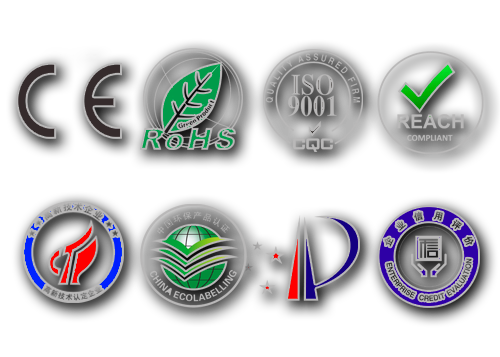How many filters do laminar hoods usually contain?
How many filters do laminar hoods usually contain?Laminar hoods typically contain the following types of filters:First, the initial effect filter Material and structure The first effect filter is generally made of non-woven fabric, metal mesh, glass fiber, and other materials. The first effect filter of non-woven material is more common, which is made of fiber through needling and other processes, and there are many pores between the fibers. This material has a low cost and can effectively filter impurities from larger particles. The metal mesh filter has good mechanical strength and can withstand large wind pressure, which is suitable for some environments with high filter strength requirements. Structurally, the primary filter is usually flat or folded. Folding the primary filter can increase the filtration area, in the same shape and size, and can filter more air, thereby improving filtration efficiency and service life. Filtration principle and efficiency Its filtering principle is mainly interception. When the air passes through the primary filter, large particle impurities in the air, such as dust, hair, fibers, etc. greater than 5-10 μm, will be intercepted by the fibers of the filter. The filtration efficiency of the initial effect filter is usually at the G1-G4 level (according to European standards), and for dust particles with a particle size greater than 5μm, the filtration efficiency is generally about 20%-80%. For example, in the general industrial workshop environment, the primary effect filter can effectively intercept large particles of impurities entering from the workshop vent, such as cotton wool, paper, etc., to prevent these impurities from entering the laminar hood, causing damage to the subsequent medium effect and high-efficiency filters. Second, the medium effect filter Material and structure Medium effect filter mainly uses glass fiber, polyester fiber, and other materials. The medium effect filter of glass fiber material has good high-temperature resistance and chemical stability and is suitable for some places with special temperature or chemical environment requirements. The medium effect filter made of polyester fiber has better flexibility and filtration performance, and its fiber can be made into different shapes and densities by special processes. The structure of the filter is diverse, including bag type, plate type, and so on. Bag type medium effect filter is a more common one, it is the filter material into the shape of a bag, air from the outside of the bag into the inside, and dust is trapped in the outside surface of the bag. This structure can increase the filter area and can accommodate more dust, extending the service life of the filter. Filtration principle and efficiency The filtering principle of a medium effect filter includes interception, inertial collision, and diffusion. When the air passes through, suspended particles with a particle size of 1-5 μm, such as pollen, mold spores, bacteria, etc., are captured by the filter under these actions. The filtration efficiency of the medium effect filter is generally at the F5-F9 level (European standard), and for dust particles with a particle size greater than 1μm, the filtration efficiency can reach about 60%-90%. In the laminar flow cover of the clean operating room in the hospital, the medium effect filter can effectively remove part of the bacteria and microbial carriers in the air, creating a relatively clean air environment for the operating room. 3. High Efficiency Filter (HEPA) Material and structure Hepa filters usually use glass fiber filter paper as the main filter material. The fiber of this filter paper is very fine, can form extremely small pores, and has a good interception effect on small particles. In order to ensure the strength and stability of the filter paper, the filter paper is generally folded into a wave shape and placed in a metal or plastic frame. The tightness of the frame is very important to prevent the leakage of unfiltered air from the edges. The outer frame material of high-efficiency filters is aluminum alloy, galvanized steel plate, plastic, and so on. Aluminum alloy frame has good strength and corrosion resistance, suitable for various environments; The galvanized steel frame has lower cost and better strength; The plastic frame is light in weight, easy to install, and has certain insulation properties. Filtration principle and efficiency The filtration principle of high-efficiency filters is mainly interception, diffusion, and electrostatic adsorption. For particles with a particle size of 0.3μm and above, such as viruses, bacteria, ultra-fine particles, etc., the filtration efficiency can reach more than 99.97% (according to the H13-H14 level, European standards). In some places with extremely high air quality requirements, such as electronic chip manufacturing workshops, high-level biological laboratories, etc., HEPA filters can effectively remove bacteria, viruses, and ultra-fine particles in the air, ensuring that the air in the work area is almost sterile. 4. Ultra-high Efficiency Filter (ULPA) Material and structure Ultra-high efficiency filters use finer filter materials, such as ultra-fine glass fiber filter paper or polytetrafluoroethylene (PTFE) film. PTFE film has excellent chemical stability, temperature resistance, and extremely low surface energy, which can effectively prevent the adsorption and penetration of particles. Its structure is similar to that of high-efficiency filters, in that the filter material is folded and placed in a sealed frame. Filtration principle and efficiency The ultra-high efficiency filter mainly filters the air through the interception and diffusion effect. It can filter particles with a particle size of 0.1-0.2μm or even smaller, and the filtration efficiency can reach more than 99.999% (according to the U15-U17 level). In some special high-tech fields, such as the lithography process of semiconductor manufacturing, ultra-high efficiency filters are needed to ensure the ultra-high cleanliness of the working environment and prevent small particles from causing damage to the chip manufacturing process. |

 German
German French
French Italian
Italian Portuguese
Portuguese Japanese
Japanese Korrean
Korrean Russian
Russian




